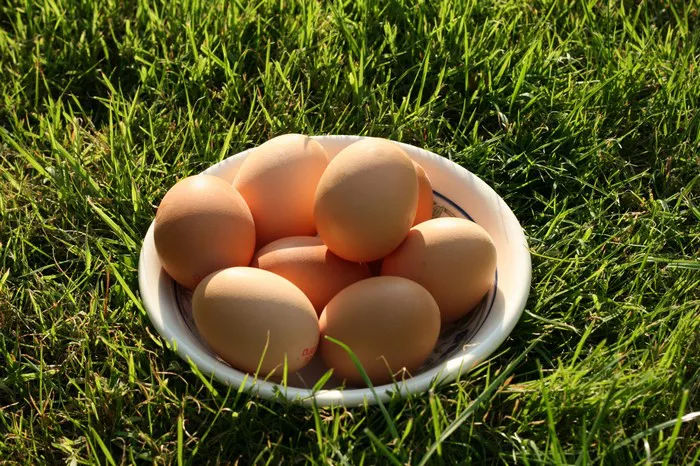Managing diabetes requires careful attention to diet and food choices. For individuals living with diabetes, making informed decisions about what to eat is crucial in maintaining stable blood sugar levels and promoting overall health. This article will outline the foods that sugar patients, particularly those with Type 1 and Type 2 diabetes, should avoid. Understanding which foods can negatively impact blood sugar control is essential for effective diabetes management.
Understanding Diabetes and Blood Sugar Management
Diabetes is a chronic condition characterized by high blood sugar levels due to insulin resistance or insufficient insulin production. Insulin is a hormone produced by the pancreas that helps regulate blood sugar levels. When food is consumed, carbohydrates break down into glucose, leading to a rise in blood sugar levels. In people with diabetes, the body’s ability to manage this process is impaired.
The Role of Food in Blood Sugar Control
Diet plays a vital role in blood sugar management for individuals with diabetes. Foods that rapidly increase blood sugar can lead to hyperglycemia (high blood sugar), while others can help stabilize levels. To maintain optimal health, it is essential to understand which foods to avoid and why.
Foods to Avoid for Diabetes Management
1. Sugary Foods and Beverages
Sugary foods and beverages are among the most detrimental to blood sugar control. These items contain high levels of added sugars, which can lead to rapid spikes in blood glucose levels.
Soft Drinks: Regular sodas, energy drinks, and sweetened teas are loaded with sugar. A single can of soda can contain over 30 grams of sugar, equivalent to 7 teaspoons. Consuming these drinks can lead to significant blood sugar increases.
Candy and Sweets: Candies, chocolates, and other sugary snacks provide little nutritional value and are high in simple sugars. These can cause quick spikes in blood sugar levels, making them poor choices for individuals with diabetes.
Baked Goods: Pastries, cakes, cookies, and donuts often contain high amounts of sugar and refined flour, leading to rapid blood sugar elevation. Many baked goods also have unhealthy fats, which can contribute to heart disease.
2. Refined Carbohydrates
Refined carbohydrates are processed foods that have been stripped of their natural fiber, vitamins, and minerals. They can lead to rapid increases in blood sugar.
White Bread and Pasta: Made from refined flour, these products lack the fiber found in whole grain options. Whole grains slow down the digestion and absorption of carbohydrates, preventing spikes in blood sugar.
White Rice: Similar to white bread, white rice is low in fiber and high in simple carbohydrates. Consider substituting it with brown rice or other whole grains that provide more nutrients and fiber.
Breakfast Cereals: Many popular breakfast cereals are high in added sugars and low in fiber. Always read the labels and choose whole-grain, low-sugar options.
3. High-Glycemic Index Foods
The glycemic index (GI) is a measure of how quickly a food raises blood sugar levels. Foods with a high GI value can cause rapid spikes in glucose levels, which can be detrimental for individuals with diabetes.
Potatoes: While nutritious, potatoes have a high glycemic index, especially when fried or mashed. Consider alternatives like sweet potatoes, which have a lower GI and provide more nutrients.
White Bread and Bagels: These have high GI values and can lead to quick increases in blood sugar. Choose whole-grain alternatives for better blood sugar control.
Certain Fruits: Some fruits, like watermelon and pineapple, have a high GI. While fruits are healthy, it’s essential to choose those with a lower GI, such as berries, apples, and pears.
4. Processed Foods and Snacks
Processed foods often contain unhealthy ingredients, including added sugars, unhealthy fats, and preservatives, which can negatively impact blood sugar control.
Packaged Snacks: Many chips, crackers, and snack bars are loaded with refined carbohydrates and added sugars. Choose whole food snacks like nuts, seeds, or vegetables with hummus.
Frozen Meals: Many frozen dinners are high in sodium, preservatives, and unhealthy fats. Always check the nutrition label and consider homemade meals for better control over ingredients.
Instant Foods: Instant noodles and rice often contain high amounts of salt and preservatives, leading to blood sugar spikes. Opt for whole grain options or homemade meals instead.
5. Foods High in Saturated and Trans Fats
High intake of unhealthy fats can lead to weight gain and increase the risk of heart disease, a common complication in diabetes.
Fried Foods: Items like French fries, fried chicken, and doughnuts contain unhealthy fats that can lead to insulin resistance and weight gain. Baking, grilling, or steaming foods is a healthier cooking method.
Processed Meats: Sausages, hot dogs, and bacon are often high in unhealthy fats and sodium. Lean proteins, such as poultry, fish, and plant-based proteins, are better choices.
Full-Fat Dairy Products: Cheese, cream, and whole milk can be high in saturated fats. Opt for low-fat or fat-free dairy options.
6. High-Sodium Foods
Excess sodium intake can contribute to high blood pressure, increasing the risk of cardiovascular complications in individuals with diabetes.
Canned Foods: Many canned vegetables, soups, and beans are high in added sodium. Choose low-sodium or no-salt-added options whenever possible.
Condiments and Sauces: Soy sauce, salad dressings, and ketchup often contain high amounts of sodium. Look for low-sodium versions or make homemade alternatives.
Snack Foods: Many processed snack foods, such as chips and crackers, are loaded with salt. Consider fresh fruits and vegetables for snacks instead.
7. Alcohol
While moderate alcohol consumption may be acceptable for some individuals with diabetes, excessive intake can lead to fluctuations in blood sugar levels.
Sweet Wines and Liqueurs: These often contain high amounts of sugar. Opt for dry wines or spirits mixed with low-sugar mixers.
Beer: Beer can also cause blood sugar spikes, particularly if consumed in large quantities. Limit intake and choose lower-calorie options when possible.
Mixed Drinks: Cocktails made with sugary mixers can lead to rapid increases in blood sugar. Opt for drinks mixed with soda water or other sugar-free options.
Reading Labels and Making Informed Choices
Understanding nutrition labels is essential for making healthier choices. Here are some tips for reading food labels effectively:
1. Check Serving Sizes
Pay attention to serving sizes to understand the amount of carbohydrates, sugars, and fats you will be consuming. Often, a single package may contain multiple servings.
2. Look for Added Sugars
Check for “added sugars” in the ingredient list. These can include high fructose corn syrup, cane sugar, and other sweeteners. The lower the added sugar, the better.
3. Focus on Fiber Content
High fiber content is beneficial for managing blood sugar levels. Aim for foods with at least 3 grams of fiber per serving.
4. Be Cautious of Health Claims
Foods marketed as “sugar-free” or “low-fat” may still contain unhealthy ingredients. Always read the labels to ensure that the product is a healthy choice.
Building a Diabetes-Friendly Diet
While it’s crucial to know what to avoid, it’s equally important to focus on foods that promote better blood sugar control. Here are some food groups to emphasize in your diet:
1. Non-Starchy Vegetables
Incorporating a variety of non-starchy vegetables into your meals can help provide essential nutrients without causing spikes in blood sugar. Options include:
Leafy Greens: Spinach, kale, and collard greens are nutrient-dense and low in calories.
Cruciferous Vegetables: Broccoli, cauliflower, and Brussels sprouts are high in fiber and vitamins.
Colorful Vegetables: Bell peppers, zucchini, and carrots provide various vitamins and minerals.
2. Whole Grains
Choosing whole grains over refined grains can significantly impact blood sugar management. Opt for:
Brown Rice: A whole grain that provides fiber and nutrients.
Quinoa: A complete protein that is also high in fiber.
Oats: Great for breakfast and can help lower cholesterol levels.
3. Lean Proteins
Incorporate lean protein sources to support muscle health and maintain stable blood sugar levels. Options include:
Poultry: Skinless chicken and turkey are great lean protein sources.
Fish: Fatty fish like salmon and mackerel are rich in omega-3 fatty acids, beneficial for heart health.
Plant-Based Proteins: Lentils, chickpeas, and black beans provide fiber and protein.
4. Healthy Fats
Incorporating healthy fats can help with blood sugar control and overall health. Include:
Avocados: Rich in monounsaturated fats and fiber.
Nuts and Seeds: Almonds, walnuts, flaxseeds, and chia seeds provide healthy fats and protein.
Olive Oil: A healthy fat choice for cooking and salad dressings.
Practical Tips for Avoiding Unhealthy Foods
1. Meal Planning
Planning meals ahead of time can help you avoid unhealthy food choices. Create a weekly meal plan that focuses on balanced meals using whole, nutrient-dense foods.
2. Healthy Snacking
Prepare healthy snacks to avoid reaching for sugary options. Consider options like:
Fresh Fruits: Apples, berries, and oranges are great choices.
Veggies with Hummus: Carrots, celery, and bell peppers dipped in hummus are nutritious and filling.
Greek Yogurt: High in protein and can be topped with fruits or nuts for added nutrition.
3. Cooking at Home
Preparing meals at home allows for better control over ingredients and portion sizes. Experiment with healthy recipes and cooking methods like baking, steaming, and grilling.
4. Educating Yourself
Stay informed about nutrition and diabetes management. Consider working with a registered dietitian who specializes in diabetes care to create a personalized meal plan.
Conclusion
Managing diabetes requires a comprehensive understanding of diet and nutrition. By avoiding certain foods, such as sugary snacks, refined carbohydrates, and high-glycemic index items, individuals with diabetes can better control their blood sugar levels and improve overall health. It is equally important to focus on whole, nutrient-dense foods that support blood sugar management.
Educating yourself about food choices, reading nutrition labels, and planning meals can significantly impact diabetes management. Remember that each individual’s dietary needs may vary, so it is essential to work closely with healthcare professionals to create a tailored approach to nutrition and diabetes management. With dedication and informed choices, individuals with diabetes can lead healthy, fulfilling lives.
Related topics:
What Vegetables Are Good for Diabetics to Eat?



























